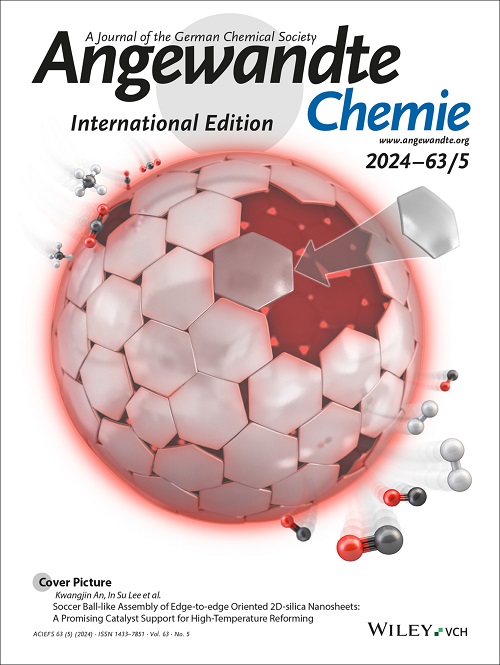电位驱动电荷效应在硬碳阳极储钠中的关键作用。
IF 16.9
1区 化学
Q1 CHEMISTRY, MULTIDISCIPLINARY
引用次数: 0
摘要
钠(Na)在硬碳(HC)中的存储是钠离子电池的基本电化学过程,其中吸附能量对充放电速率和存储容量具有重要影响。该能量的准确预测对高性能HC的设计至关重要。传统的量子力学模拟往往忽略了电化学电位的电荷效应,导致吸附能不准确,与实验结果不一致。在这里,我们证明了在现实条件下,电位驱动的电荷效应在控制Na存储中起着关键作用。为了解决这个问题,我们开发了一个电荷依赖的计算模型(CDM),明确地结合了电位诱导的电荷动力学。以平面碳层为模型,我们发现电荷效应显著地影响了活性na存储位点的识别,并且相对于传统的电荷中性模型,诱导了超过1.1 V的盐化/解盐电压偏移。这些效应源于中性碳和带电碳之间不同的化学反应。当扩展到弯曲和富含缺陷的碳特征时,HC-CDM准确地预测了与实验数据密切匹配的存储位置和电压容量分布图。这项工作解决了长期存在的理论与实验的不一致,并为设计下一代钠离子电池提供了一个强有力的框架。本文章由计算机程序翻译,如有差异,请以英文原文为准。
Critical Role of Potential-Driven Charge Effects in Hard Carbon Anodes for Sodium Storage.
Sodium (Na) storage in hard carbon (HC) is a fundamental electrochemical process for sodium-ion batteries, where adsorption energy critically influences charge/discharge rates and storage capacity. Accurate prediction of this energy is essential for designing of high-performance HC. Traditional quantum mechanical simulations often neglect charge effects from electrochemical potentials, leading to inaccurate adsorption energies and discrepancies with experiments. Here, we demonstrate that potential-driven charge effects play a pivotal role in governing Na storage under realistic conditions. To address this, we develop a charge-dependent computational model (CDM) that explicitly incorporates potential-induced charge dynamics. Using flat carbon layers as a model, we show that charge effects significantly influence the identification of active Na-storage sites and induce sodiation/desodiation voltage shifts exceeding 1.1 V relative to conventional charge-neutral models. These effects originate from distinct chemical reactivities between neutral and charged carbon. When extended to curved and defect-rich carbon-hallmarks of HC-CDM accurately predicts storage sites and voltage-capacity profiles that closely match experimental data. This work resolves long-standing theory-experiment inconsistencies and provides a powerful framework for designing next-generation sodium-ion batteries.
求助全文
通过发布文献求助,成功后即可免费获取论文全文。
去求助
来源期刊
CiteScore
26.60
自引率
6.60%
发文量
3549
审稿时长
1.5 months
期刊介绍:
Angewandte Chemie, a journal of the German Chemical Society (GDCh), maintains a leading position among scholarly journals in general chemistry with an impressive Impact Factor of 16.6 (2022 Journal Citation Reports, Clarivate, 2023). Published weekly in a reader-friendly format, it features new articles almost every day. Established in 1887, Angewandte Chemie is a prominent chemistry journal, offering a dynamic blend of Review-type articles, Highlights, Communications, and Research Articles on a weekly basis, making it unique in the field.

 求助内容:
求助内容: 应助结果提醒方式:
应助结果提醒方式:


